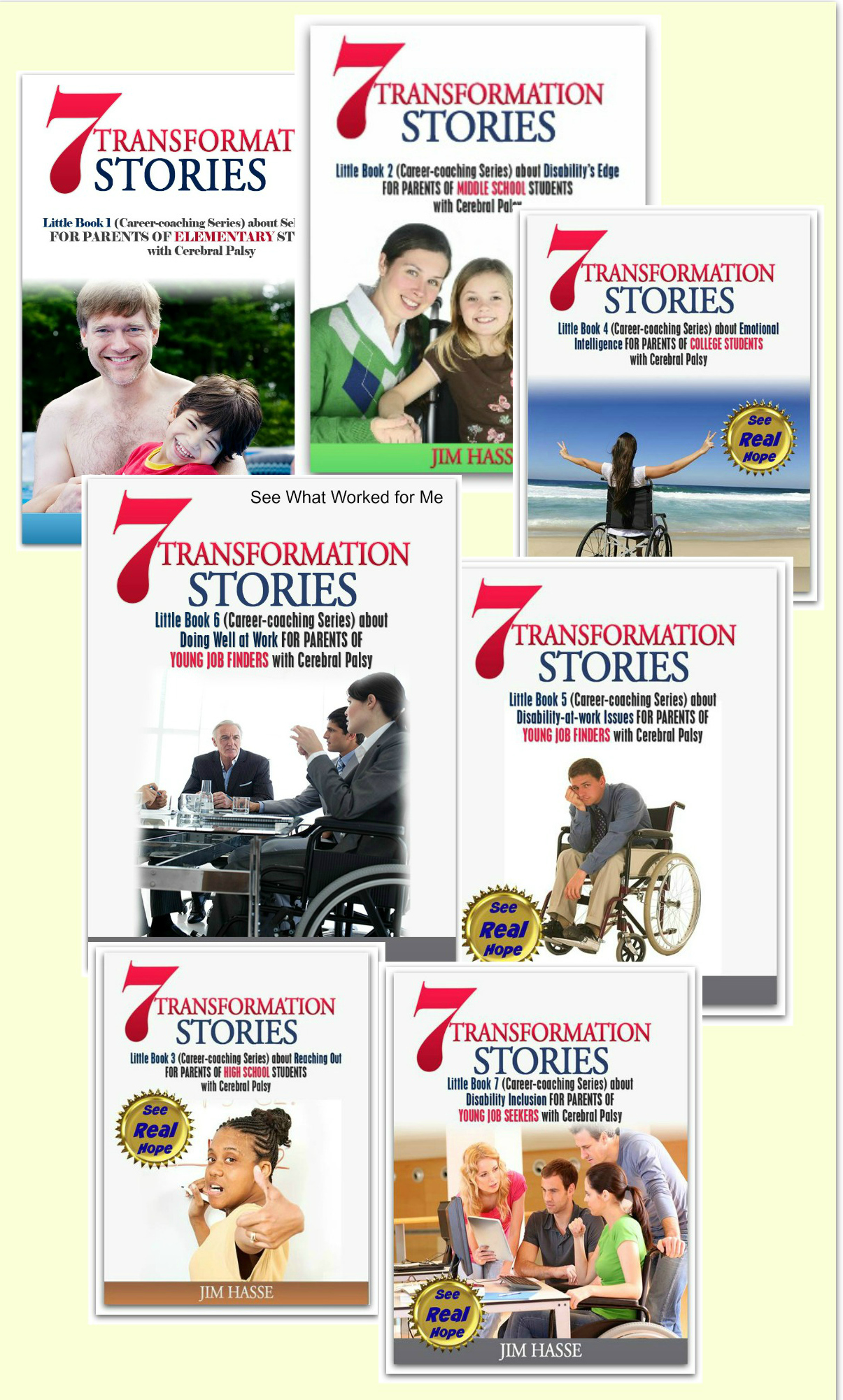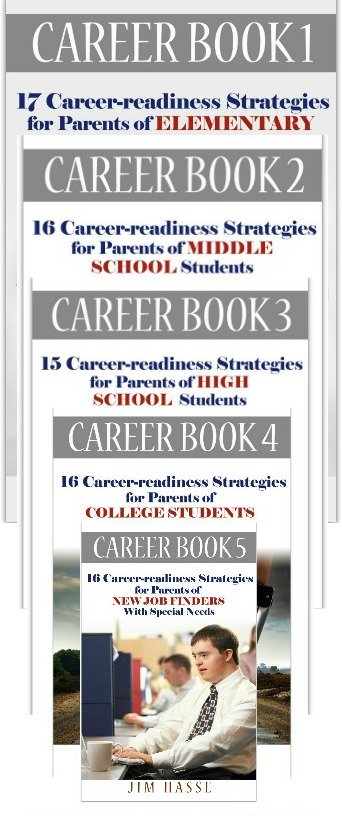Communication Skills Test: Cerebral Palsy Career Builder for College Students
By Jim Hasse, ABC, GCDF, Disability Employment Expert
_________________________________________________________
Here’s the ultimate communication skills test for the college student with cerebral palsy (CP) you’re mentoring: getting hired in the real-world job market.
Yes, that’s a tough challenge, even for someone without a disability, but, as a mentor, you need to show your soon-to-be job seeker that it’s doable.
It may help to put that challenge in terms of a communication skills test – an extension of the preparation your son or daughter has gone through during the last 15 years. Others have gone through that same preparation and have succeeded in making the transition from school to work.
“Almost half of all working-age people with disabilities in America today are employed,” writes Elisabeth (Harney) Sanders-Park, president of WorkNet Solutions, Riverside, CA.
“That’s nearly 20 million people, and you can join them,” she adds. “Employers will choose you, if you can prove you can solve a problem, make them money or help them be more successful. But, you must prove that your disability will not become their problem.”
And, she asserts, “For every barrier you have, there is someone who has faced it, overcome it, and is working today.”
And, here are a couple of figures about the economy Sanders-Park cites in “The 6 Reasons Why You’ll Get the Job” (Prentice Hall Press, 2010), a book for job seekers which she co-authored with Debra Angel MacDougall:
Despite high unemployment numbers during the worse period of what is now the Great Recession (January 2009), more than four million people got jobs and one million jobs were unfilled in the U.S.
Sanders-Park and MacDougall also wrote “No One Is Unemployable: Creative Solutions for Overcoming Barriers to Employment” (WorkNet Training Services, 1997), a book for career counselors hailed as "Top 10 Career Book of the Year" by the Los Angeles Times.
Neither book is about disabilities per se, but they both include sections specifically for job seekers with disabilities which I believe are effective foundations for a communication skills test.
I first
became acquainted with Sanders-Park’s “No One Is Unemployable” book as a Global
Career Development Facilitator (GCDF) student in 2005 and met her at the 2011
Careers Conference, Center on Education and Work, University of
Wisconsin-Madison, where she was a presenter.
Four essential steps
Here are my disability-slanted “takeaways” from her 2011 Careers Conference presentation and “The 6 Reasons Why You’ll Get the Job,” which she co-authored.
Sanders-Park says, to a land a job in any economy, your college student needs to take these four steps:
- Clarify the job target by pinpointing the
available opportunities.
- Prove you can do the job by showcasing your
attributes, skills and values.
- Avoid getting screened out and make it to the
second interview by using keywords throughout the hiring process that show a
good match between qualifications and the employer’s stated needs.
- Get in front of the people who have the hiring authority by using networking strategies (either in person or through social media) that will tap the hidden (unpublished) job market.
To tap the hidden job market, today’s job seeker does not need to be involved over the whole range of social media that are available in the current online environment.
A more effective networking strategy may be to select one medium that best meets one’s needs, hone a personal profile on that medium and then ride with it, learning the “ins” and “outs” of that particular community. That’s a communication skills test in itself.
As a job seeker, I’ve found that LinkedIn or Twitter (or a combination of the two, using Twitter to search for open jobs and using LinkedIn to build relationships with individuals working in targeted companies) can be the best avenues.
But, let’s look at point number 3 (above) more closely. As a job seeker with CP,
your son or daughter can easily be screened out early on in the hiring process
either automatically by a computer program or by someone on staff who is not
the final decision maker.

How to get to decision makers
To avoid be screened out before the second interview, your college student needs to develop a workable strategy that best fits the situation -- a strategy which will give him or her an opportunity, as Sanders-Park puts it, to “show your skills are more valuable than your perceived ‘costs’ (in terms of accommodations etc.).”
In other words, a prospective employer must have some reason to reduce her or her initial perceived risk in hiring your son or daughter with CP. That’s another side of the communication skills test your soon-to-be job seeker faces.
Specifically, Sanders-Park suggests job seekers with disabilities consider these strategies:
- Target jobs you are fully qualified to do with
your particular disability.
- Structure your job search so employers see your
value before they notice your disability.
- Decide whether and how to disclose your
disability.
- Avoid words and imagery that could intensify
employer concerns.
For instance, I use “some difficulty in muscle control” instead of “cerebral palsy or CP” in describing my unusual condition, since “cerebral palsy” can conjure up images about me that can go way beyond reality.
- Reduce your prospective employer’s perceived risk by presenting solutions for “resources that will help me be more productive” (more preferable, Sanders-Park writes, than “accommodations”) so the employer can refocus on your abilities.
But, that’s only part of
the process of getting hired (and, again, only part of the communication skills
test your college student will likely face as a job seeker).
Six transferrable skills
In “The 6 Reasons Why You’ll Get the Job,” Sanders-Park details, from an employer’s perspective, these six transferable skills she says your new job seeker will need to illustrate in concrete terms in order to get hired:
- Appropriate presentation
- Do you look, sound and act like the employer?
- Will you represent the employer in a positive way?
- Matching attitude
- Do you fit the company culture?
- What’s your outlook on work?
- Do you show flexibility and respect others?
- Dependability record
- Will you work for the company’s best interests?
- Will you be loyal to the company?
- Personal motivation
- Will you help the company achieve its goals and carry out its mission?
- Are you demonstrating that you’ll mirror the company’s values?
- Basic trainability
- How well will you apply your abilities to the job at hand?
- Can you learn and adopt?
- Can you produce results quickly?
- Valuable network
- Do you have access to key people who will benefit the company?
- Will your online contacts reflect positively on the company?
The candidate who is hired for a particular job usually stands out in all six areas, Sanders-Park maintains -- and (this is especially important for your college student with CP) those six areas need to outweigh any perceived risks the employer may have about hiring a person with disability.
To further tip that benefit-risk balance in your son or daughter’s favor, I’d offer proof that he or she can meet the employer’s needs in a positive way. Here’s how I would frame that suggestion for your college student:
Tell a story that is not more than 60 seconds long which shows you acting positively in a work situation. Your story needs to demonstrate that you have the attributes the employer values. Your story should include numbers or percentages to quantify your accomplishment. In other words, show what the employer will specifically gain by selecting you for the job.
Sanders-Park even suggests that your student start networking with someone in the targeted company’s HR department or a present employee via LinkedIn or by telephone to further clarify what the employer values in an employee.
“You’re then in a position to show and tell about how you match those needed skills throughout the hiring process,” she notes, highlighting the importance of company research as a part of this communication skills test.
In fact, I view all of these tips as parts of an overall job marketing template for your soon-to-be job seeker – one that is basically a communication skills test of what he or she has learned through years of preparing for the transition from school to work.
Return
from Communication Skills Test to Interview Tips
Go
to Cerebral Palsy Career Builders
This is Creative Commons content. You can freely and legally use, share and repurpose it for non-commercial purposes only, provided you attach this sentence and the following attribution to it (including the two links):
Originally written and illustrated by Jim Hasse, ABC, GCDF, owner of Hasse Communication Counseling, LLC, who, as a person with cerebral palsy, served for 10 years as a vice president in a Fortune 500 company during his 29-year career in corporate communication. He’s an Accredited Business Communicator, certified as a Global Career Development Facilitator and author of 14 Amazon books about disability awareness and disability employment issues.





